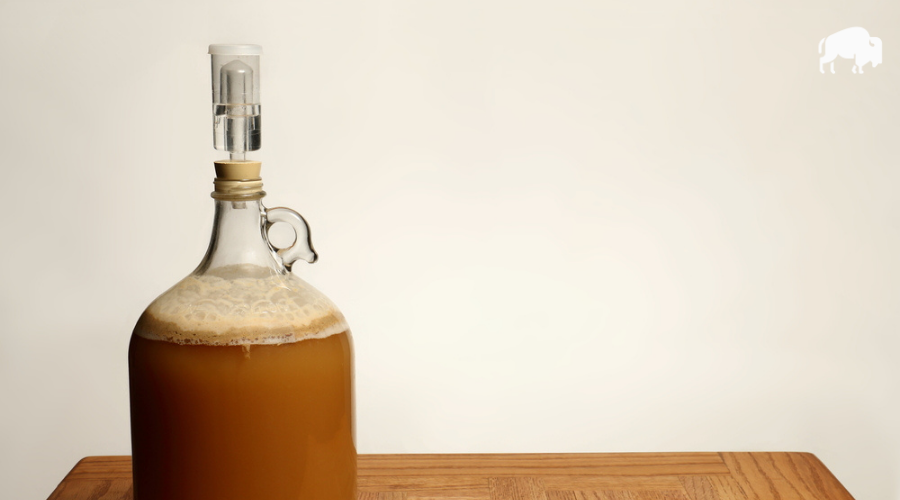Many brewers used to avoid using some of the best Saison strains available because they were notorious for “stalling” midway through a fermentation. Now we have science to lead us to best practices on how to avoid the dreaded Saison stall. Turns out the answer is simple.
What is Saison Stall?
Saison stall is characterized by certain Saison yeast strains (notably Wyeast 3724 Belgian Saison and WLP565 Belgian Saison) fermenting down to a gravity of about 1.030 and “stalling”. Time and temperature may solve the problem but many people have resorted to pitching other yeast (US-05 or Champagne) to finish fermentation. We now have evidence to support the practice of open fermenting as the best solution to avoid “Saison Stall”.

Why Does it Stall?
It’s about to get a little nerdy. In order to really understand why some Saison yeast are prone to stalling, we need to talk about diastaticus.
Diastaticus!
There are varieties of saccharomyces cerevisiae brewing yeast that are now labeled as “var. Diastaticus”. These are brewing yeast that have diastatic power. Diastatic is, by definition, the ability to convert starch into sugar.
The reason these yeast have this special diastatic ability is due to the presence of the STA1 gene. In essence, STA1 triggers the production of glucoamylase. Glucoamylase, in turn, takes starches (e.g. dextrins) and turns them into simple sugars. This makes the sugar available for the yeast to consume and fermentation proceeds…smart bugs!
STA1 and var. diastaticus are terms used pretty much interchangeably to refer to these yeast.
Not All STA1 Positive Yeast Are Created Equal
It is interesting to note that some STA1 positive yeast do not perform as well as others. For example, you can have an STA1 positive yeast that doesn’t really express much glucoamylase and therefore doesn’t ferment down to a really low gravity.
Consider the powerhouse of a yeast, Wyeast 3711 French Saison. I’m hypothesizing that it’s STA1 ability is likely very high and this is reflected by the fact that it will ferment quickly with a very high amount of attenuation.
As a quick note, it’s valuable to know that all Saison yeast strains on the market carrying the label “Saison” are var. diastaticus.
But Why Do Saison Yeast Strains Stall?
Ok, so we know Saison strains are STA1 positive. We also know some will power through faster than others i.e. they won’t stall.
The main hypothesis behind Saison strains stalling is that in a closed fermentor the yeast lack the oxygen they need to finish fermenting, at least in a timely manner. Looking at the following information will further illuminate the “why” behind this fact.
First we know that the presence of glucose suppresses STA1 expression. And we also know that when either oxygen or ethanol is present, STA1 expression is increased. So oxygen helps the yeast produce glucoamylase. The takeaway here is that access to oxygen will keep the fermentation going.
All of this explains why certain strains will power through roughly ¾ of a fermentation only to stall and creep along for the remainder. However, if the yeast have access to oxygen, they will perform better.
How to Avoid Saison Stall
Now that we understand why STA1 yeast are prone to stalling we can apply that knowledge to avoiding the stall.
Open Fermentation
Avoiding the dreaded Saison stall is a simple matter of open fermenting whenever you are using a Saison strain with a reputation for stalling. For the record, I advocate open fermentation for pretty much any beer but definitely for Saison.
Open fermentation allows the yeast access to oxygen when they need it. This, in turn, increases the expression of the STA1 gene which leads to a speedier fermentation.
Temperature Control
In addition to open fermenting, ensuring an appropriate and stable temperature during fermentation is best practice. This rule applies to any fermentation and helps ensure that your yeast have the best possible environment to work in.
Some commercial breweries are known to ferment Saisons really warm. Fermentations take place in the 80s and 90s fahrenheit. As a homebrewer this is not advisable because we are dealing with much smaller batch sizes and won’t have the same ester / fusel alcohol suppression from a significant amount of hydrostatic pressure.
I like the Saison fermentation schedule that Drew Beecham recommends. It is focused on achieving a great flavor character from fermentation. It also helps the yeast to stay active by allowing for a temperature rise towards the end of fermentation.
How to Open Ferment
Open fermentation sounds scary but it isn’t. It’s easy!
All you need is a sanitized piece of aluminum foil to cover the top of your fermentor in place of your airlock. So, nix the airlock and use foil. The foil is there to help keep other yeast and other bugs, large and small, from floating or flying into your beer.
You’ll need to keep an eye on your fermentation and put an airlock on the fermentor when you are close to your final gravity. You don’t want stale beer!
I recommend checking your gravity and putting an airlock on your fermentor once you see that you are within about five points of your final gravity. For example, if I see a gravity reading of 1.010 and I know my final gravity should be 1.005, it’s time to throw an airlock on the fermentor.
Recommended Resources
Here are some more ways you can dig into the topic of Saison stall:
- Experimental Brewing Podcast episode 113 at minute 46:35 gives a nice broad overview of the why behind Saison stall.
- Milk the Funk the Podcast episode 009 “Diastaticus the Podcast” starting at minute 36 talks about why Saison yeast stall.
- Master Brewers Association of the Americas Podcast episodes 68 and 69.
Credit Goes to…
On the homebrewing level, the first person I heard promoting open fermenations as the solution for avoiding Saison yeast stall was Drew Beechum. A big thanks goes to him for sharing his experiences with everyone and helping us all to make better Saisons!
How To Brew Saison Video Course
If you want to learn how to brew perfect Saisons, check out this Craft Beer & Brewing video course:
John Coyle and Steve Ashton cover everything you need to know to brew your next great saison. Starting with the origins of the style, they cover recipe development, brew day, and fermentation of 7 different saison variations.
It’s free for the first 30 days giving you access to over 60 homebrewing courses from the best brewers in the business.
Final Thoughts
It will be interesting to see in the future what new discoveries are made to further support the practice of open fermentation as a method for avoiding “Saison stall”. For now, the research that is available is definitely enough to support open fermentation as being the best method for a healthy fermentation when using certain Saison yeast strains.
Now you know what you need to do in order to utilize some of the best yeast strains known to man. Brew a batch, open ferment it, mind your temperature, and enjoy a Saison!


